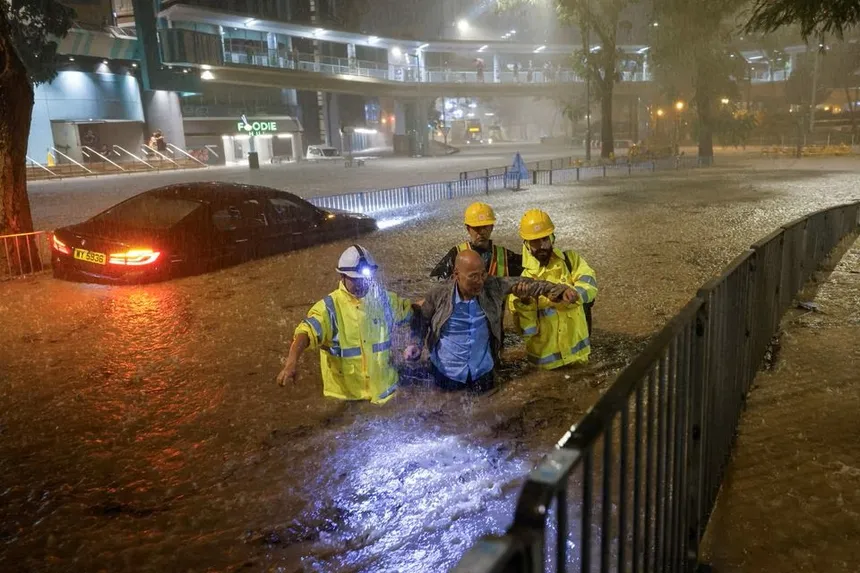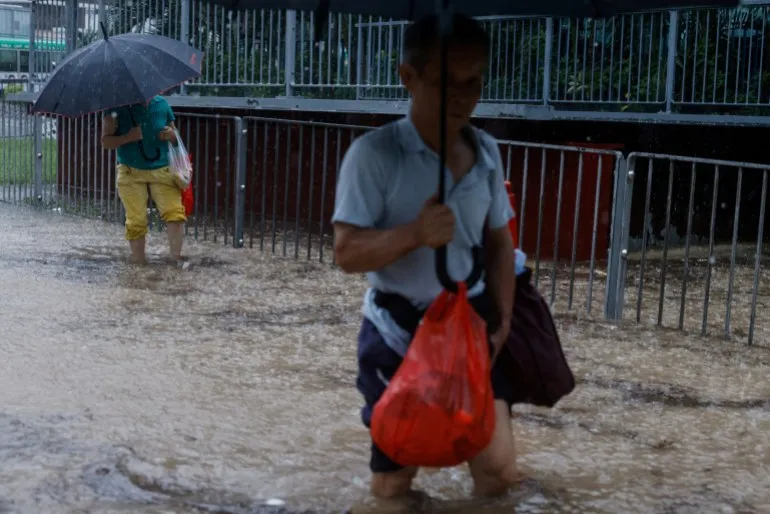The city of Hong Kong has witnessed its worst rainstorm in 140 years, leaving a trail of destruction and chaos in its wake. Two people have lost their lives, and over 100 more have been injured as a result of the torrential downpour. The rain, caused by a typhoon named Haikui, brought waist-deep flooding to narrow streets, inundated malls, railway stations, and tunnels, causing unprecedented disruption to the city.
“I’ve never seen scenes like this before. Even during previous typhoons, it was never this severe. It’s quite terrifying,” said Connie Cheung, a 65-year-old assistant nurse who has lived in Hong Kong all her life. The city’s weather bureau issued its highest “black” rainstorm warning early on Friday, warning of the severe flooding that was to come.
The rain, which was brought by the slow-moving clouds of Haikui, dumped huge volumes of precipitation on areas that were still wet from a super typhoon that hit the region just a week earlier. Over 200mm of rain was recorded on Hong Kong’s main island, the Kowloon district, and the north-eastern part of the city’s New Territories from late on Thursday.
Despite the city’s efforts to respond to the crisis, the situation remained dire. The city’s leader, John Lee, instructed all departments to respond with “all-out efforts” to deal with the flooding, while the authorities shut schools and told workers to stay at home. The city’s stock exchange was also closed, and the transport network was severely disrupted.
The MTR Corp, which operates the city’s rail network, was forced to shut at least one line and operate others with delays. Videos showed railway workers wading waist-deep in water in a station, while some roads were partly washed out, including a main route to the city’s southern beaches. A car was even swallowed up by a metres-wide pothole, social media pictures showed.

The floodwaters also claimed a life, when a person was pronounced dead on arrival at hospital. The Hong Kong Cross-Harbour Tunnel, one of the main arteries connecting the island to Kowloon, was inundated, and a shopping centre in the Chai Wan district was half submerged. Some passenger and cargo clearance operations at two border points between Hong Kong and Shenzhen were also suspended due to flooding. More than 100 pigs in an area near the border with Shenzhen drowned in a flood, media reported.
The nearby city of Shenzhen, a tech hub of over 17.7 million people, was also severely affected. All schools, some Metro stations, and offices in the city were shut on Friday, while residents stepped gingerly through knee-deep water, holding on to safety lines. Videos showed that the entrance and exit areas of the Shenzhen railway station were flooded, with trains connecting the city and the provincial capital of Guangzhou suspended. About 100 people were stranded at the station.
The rainfall in Shenzhen was the heaviest since records began in 1952, with 465.5mm of rain falling in just 12 hours. Daily rainfall in the city was expected to exceed 500mm, Shenzhen media said. The city of Guangzhou, to the north, and the industrial city of Dongguan, to the north-east, also reported heavy rainfall, with Dongguan experiencing its heaviest rain in 15 years.

